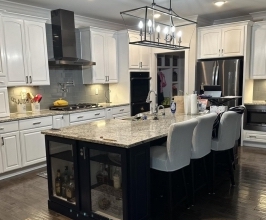Understand that customers are not bad people, they just don't know what we know
Be prepared (and rehearsed) to educate fast. Customers come in with global ideas and overlook simple, costly details. An example would be a client who inquired about having a matching pair of bedside chests constructed with three drawers in each. When shocked at material costs, the client needed to be educated about costs - that there were approximately $200 in drawer pulls alone, each one costing over $15. Their response, "That's an outrage... There's only six drawers total so it should only be $100," further shows the need to remind the customer that there are two pulls per drawer. N Dean Mosey Jr
Qualify before you go out on the job on the first phone call.
Try to sort out real buyers from lookers. Ask open-ended questions to determine the customer's objectives, motivation and where they stand in the timeline of their buying decision.
- How did you hear about me and what have you heard?
- When do you need an estimate completed?
- What prompted you to want to do this project?
- What other vendors/stores have you contacted or researched?
- When do you need it completed?
- What is more important to you: the price or the quality of the job?
- When would you like to get this installed?
- Can the installation be done during normal working hours
- If we need to do finish samples or other submittals for approval, do you want me to price that separately?
- Are there any other projects you've been considering?
If you feel they are just shopping, charge for the estimate. Require a paid, upfront design/bid deposit of $50 per hour, with a 2-hour minimum that will be applied to the finished project if commissioned. N Dean Mosey Jr.
Customers buy from people they like and trust
Do everything possible to create a relationship with the prospect ahead of the price. Give them lots of reasons to choose you other than price. Sell yourself as an artist and sell the value of what you offer. Carl Evans
Ask for a budget number early in the first appointment
Knowing what your clients' expectations, before you waste your time working up a price, is important. Always ask what the customer has budgeted for their project. Judge their reaction and, if you sense resistance, remind them there is a huge difference between buying something mass produced in a third world country and having something handcrafted by artisans who will stand behind their products. If you feel they are just shopping, charge for the estimate. Require a paid, upfront design/bid deposit of $50 per hour, with a 2-hour minimum that will be applied to the finished project if commissioned. Value yourself first. Don't make something "work" for a customer. N Dean Mosey Jr. If they continue to pursue a lower price point, you have a few choices:
- Don't bid on the job - politely steer them to a store or another shop where they will find what they want. Never burn your bridges with anger - you never know if they might come back or refer you to a friend. Creig and Barbara Donnelly
- Ask them if they would like a written estimate to substantiate the value of your work.
- Value Engineer your bids, giving them two price points to help drive home the point that they control both the quality and cost of the job with their choices.
Go into written detail on the estimate/quote
In negotiating, this is called the power of the written word. A written estimate is far more effective than a verbal one. If you get to the point where you think it is worth your time to prepare an estimate, do it in writing and in great detail. It is easy for a customer to challenge a verbal price, but difficult for customers to refute clear statistics. Develop your job estimates with minute detail.
Detail every step as a line item, every 10-minute step, every trip for materials, every drawer pull, etc. This makes it easier to Value Engineer the job. If the customer balks, ask them which parts they would like to do or which items they would leave out - would they like to pick up the lumber, etc. Putting it ALL in writing is time consuming but it really helps. Make a template of typical job costs so you can re-create the lists quickly.
Great one-liners from the folks on LinkedIn:
- When the customer starts talking about big box stores or another competitor, you say: They don't try to compete with my quality, so it really doesn't seem fair to them for me to compete with their price." (Matt Frideres)
- If a customer says that a competitor will do it for less, don't get into that ditch. Tell them: "Then you should hire that person instead." Generally, they already know the difference in quality between the two vendors.
- If they ask for a ballpark figure, you reply: That depends on the size of the ballpark. Then start asking what kind of wood do you want, what kind of hinges, drawer pulls, ball slides . . . David Petersen
- If you have a customer that says the price is crazy and that they can get it done for a fraction of the price, respond by asking how much their car cost. When they give you the answer, say. "that is crazy, I can get that car for a fraction of the price at the scrap yard." Brahm Zuckerman
- Tell them "you can have "Fast, Cheap, or Quality", pick two". (George Harvey)
There are customers that you don't want, or, some of the best deals are the ones you don't make (Geoffrey Fitzwilliam)
Be prepared to politely walk from an unreasonable customer. Unprofitable jobs challenge you both financially and emotionally. Don't try to "make something work" for somebody. Tell the customer "the likelihood that they will be less than 100% satisfied is high. There is a 100% certainty, however, that I will not be satisfied 100% and therefore it isn't in the best interest of my reputation." If the prospect cannot understand that this is ultimately in their best interest, then they have come to the wrong place. N Dean Mosey Jr

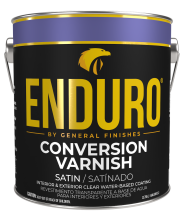 Enduro Water-Based Conversion Varnish
Enduro Water-Based Conversion Varnish
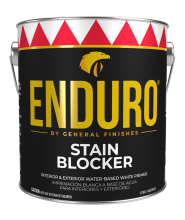 Enduro Water Based Stain Blocker Primer
Enduro Water Based Stain Blocker Primer
 Enduro Water-Based Tintable 2K White Poly
Enduro Water-Based Tintable 2K White Poly
 Enduro Water-Based Pro Series White Polyurethane
Enduro Water-Based Pro Series White Polyurethane
 Hard Wax Oil & Hardener
Hard Wax Oil & Hardener
 Gel Stains
Gel Stains
 Pro Image Flooring Topcoat
Pro Image Flooring Topcoat
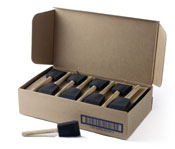 Jen Poly Brushes
Jen Poly Brushes
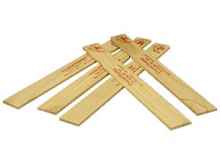 Stir Stix
Stir Stix
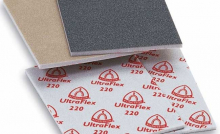 Ultraflex Softback Sanding Sponge
Ultraflex Softback Sanding Sponge

